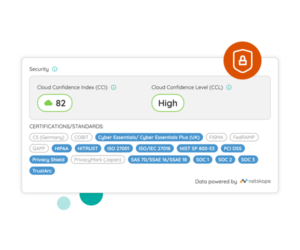01/02/2024
Table of Contents
As we all know, 2023 was largely a continuation of difficult trends from 2022. There was a lot of uncertainty—no economic bounceback, political tumult, generative AI, and the list goes on. And the year certainly didn’t pan out as optimistically as it had been forecast this time last year.
SaaS has also changed as an industry. SaaS overran on-premises software, for one. IDC reported in their Q4 State of the Market report that 60% of software spend was on SaaS—up 10% from 2022.
Two, AI took the world by storm. In that same IDC report, analysts forecast that AI will make up 10-20% of IT budgets by 2028. And that’s before we look at budget forecasts.
Companies clamped down on unnecessary spend this year, yet prices will only continue to rise in 2024. Gartner forecasts global software spend to increase by 13% this year. Yet, IT leaders expect only nominal budget increases. In other words: IT will only continue to be overwhelmed with spend increases.
Despite all that, I’m optimistic for IT in 2024. I expect CIOs to take more responsibility in supporting profitability, and IT’s reputation will continue to shift from being a cost center to a value driver. So, what priorities should IT focus on in 2024 when it comes to software management?
Listen to the podcast episode or dive into the list below.
5 Priorities for IT in 2024
1. Become Best Friends with Your CFO
Your CFO holds the cards when it comes to budget, so becoming best friends with them is a good idea regardless of how polished your SaaS stack is. There are two ways you can partner with your CFO, and you can modulate your strategy to build a unique partnership, as needed.
First, cost optimization. Many of us are likely faced with flat or reduced budgets, yet there’s still pressure to innovate. CFOs are typically holding the torch for cost optimization by themselves.
As an IT leader, you can help them meet that goal by optimizing your software and trimming SaaS spend. You can show a unified front and build a relationship.
Second, getting new technology purchases approved. In today’s environment, CFOs are the economic buyers in the software acquisition process.
The closer you are to aligning with their goals and budget, the more successful you’re going to be in getting a signature on new technology purchases. Show a unified front; earn their trust.
2. Centralize SaaS Governance
We’ve seen more and more IT organizations move toward a governance framework that centralizes IT oversight while still enabling lines of business and employees to purchase SaaS when they need to. It’s something we like to call Freedom within a Framework. If you haven’t centralized your SaaS governance yet, you need to. It’s an impactful measure to curb costs and risk.
To drive effective governance:
- You must partner with your CFO or finance team to ensure policies are being followed on things like employee-led purchasing, redundancies, and compliance, to name a few.
- You also need to work closely with lines of business to ensure tools meet the needs of employees. Don’t view it as a one-and-done thing; see it as an ongoing conversation. This helps you to be seen as a value driver and trusted partner within the business.
This is why the Freedom within a Framework system can work so well for many organizations. It allows you to achieve both of the above goals with enough flexibility to adapt to new circumstances.
Evolving Your SaaS Governance Framework for the Digital Workplace
Learn More3. Rationalize Your Portfolio
Rationalizing the SaaS portfolio is making the top of many CIOs’ priority lists this year, and for good reason. Reducing your SaaS footprint and controlling SaaS sprawl enables you to:
- Increase efficiency in your stack and across your business.
- Create fewer avenues for bad actors to enter (no one wants security breaches).
- Reduce SaaS costs across the board.
4. Stay Ahead of Security Risks
I can’t say this enough: you can’t stay ahead of security risks without visibility of your SaaS stack. You can’t manage—and you certainly can’t protect—what you can’t see.
 It is paramount that you know your risk exposure and identify and track apps that are or are not in compliance with policies and risk regulations. The fact of the matter is that your risk exposure and surface attack area are only going to keep growing.
It is paramount that you know your risk exposure and identify and track apps that are or are not in compliance with policies and risk regulations. The fact of the matter is that your risk exposure and surface attack area are only going to keep growing.
Just look at Okta’s numerous hacks this year. You can’t control everything, but you better be on top of what you can control. Make sure you’re prioritizing visibility into security risks this year. You’ll save yourself and your organization a whole lot of trouble.
5. Prepare to Make Big Tech Bets Again
In 2023, most of us were just trying to keep the lights on. Companies have been cleaning up their acts over the last few years, making way for responsible business growth practices. And, now that the dust has more or less settled, more companies will get back to making big tech bets in 2024.
You can use SaaS management as a mechanism to open your budget for funding those initiatives. Optimize, trim, and free up budget for big bets.
As far as the bets you should be looking for, AI is definitely one. However, my advice is to take a cautious approach to it. It’s the biggest area of risk and concern right now, and for good reason.
In my conversations with CIOs, they’re taking some different approaches. Some are ready to adopt AI tools, believing they can unlock productivity through AI investments. Others are listening and waiting for the business to go all-in with an AI strategy. Work with your CIO to understand what works best for your business.
Optimize Your IT Priorities in 2024
As an IT organization, you have the opportunity to be a real value driver in your organization—far more than just a cost center. Focus on forming close partnerships with key stakeholders, supporting profitability, and optimizing your software investments, and you’ll be set for success in the future.
ABOUT THE AUTHOR
Ben Pippenger
As Chief Strategy Officer, Ben is responsible for shaping and driving Zylo’s corporate strategy by monitoring and analyzing key market trends. As Zylo co-founder, he is passionate about the power of SaaS and helping organizations understand how they can manage, measure and maximize their investments for greater business impact. Ben is a self-proclaimed SaaS geek, with more than 20 years of B2B software experience, and a recognized SaaS and software management thought leader. Before founding Zylo, Ben held leadership roles in product and account management at Salesforce and ExactTarget.

